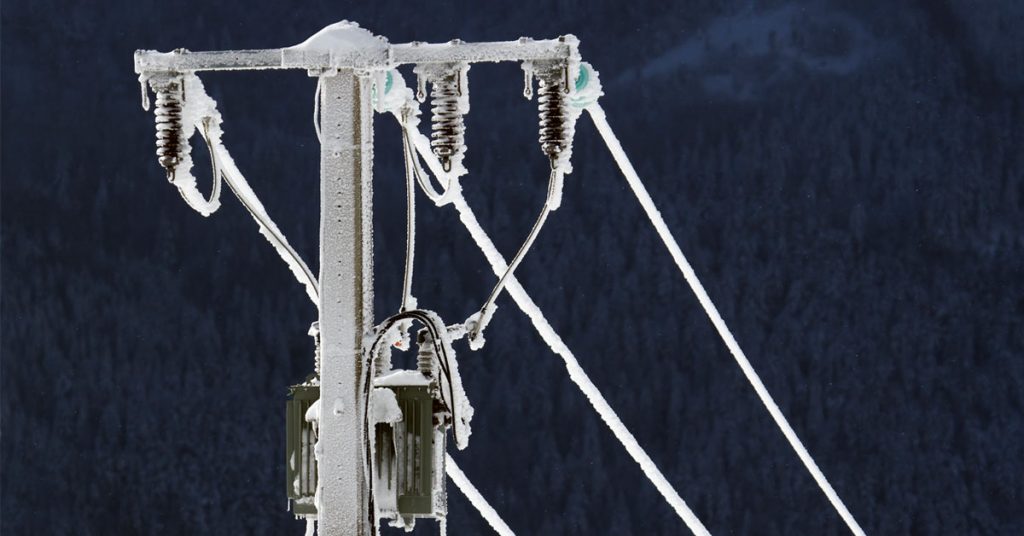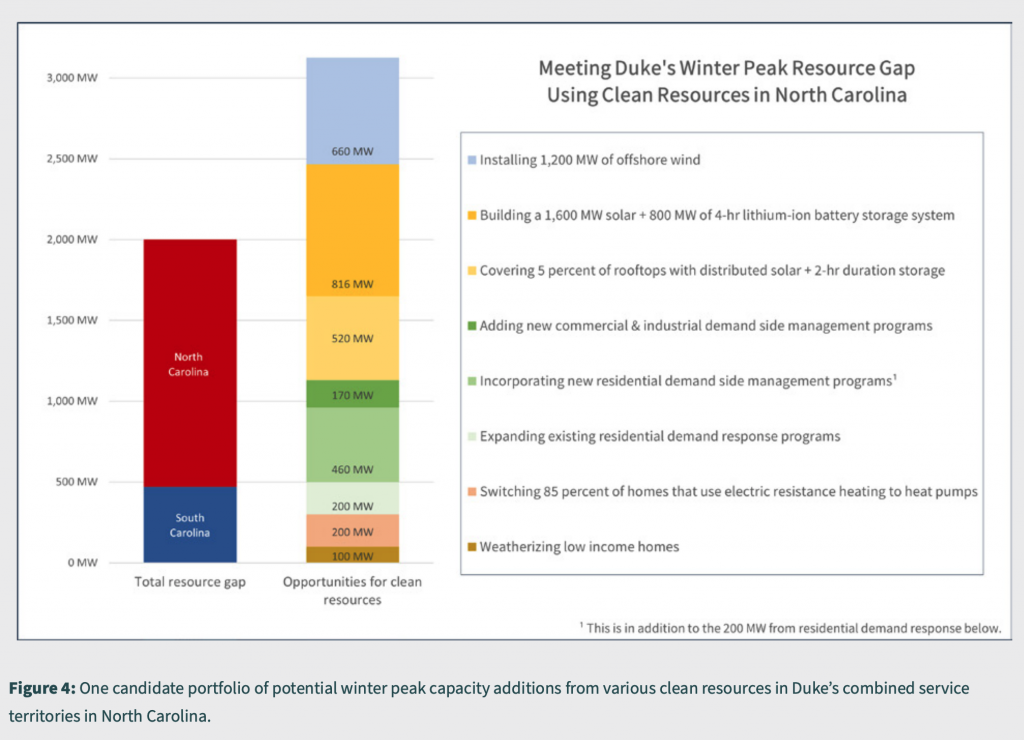Front Porch Blog

istockphoto.com
If you were in North Carolina, or most parts of the Southeast, you know it was cold! Cold that spanned mountains to sea, affecting areas of the state that are not used to or prepared for temperatures in the single digits. Although it was very cold, these temperatures were not unprecedented for Duke Energy to manage. In 2018, North Carolina’s major cities reached similar and lower temperatures than were seen in 2022 and did not result in rolling blackouts. And although Duke Energy assured regulators and customers they were prepared for the storm, for some in North Carolina, these blackouts came with very little warning or information about how long they would last.
What caused these blackouts and what do they mean for the future?
These blackouts sparked a strong debate about the reliability of our electricity and what needs to be done to prevent future blackouts. It also inspired misinformation. When extremely cold temperatures cause energy reliability problems or blackouts, there tends to be a backlash against the renewable energy transition. This happened in Texas in 2021, and it happened in North Carolina last December.

Aerial view of a coal-fired power plant in Asheville, N.C. Photo courtesy of the French Broad Riverkeeper.
The failure of fossil fuels wasn’t the only concern in December’s temperature drop. There was also a sharp peak in the demand for electricity as more people were struggling to stay warm. Maintaining reliable electricity is not just about producing enough electricity to manage a huge spike in energy demand, it’s also about better preparing homes and businesses to adapt to these changing conditions. Extreme weather will become more frequent with climate change and — with support from utility companies — our electric grid, our homes and businesses can be better prepared to handle these changes. This kind of preparation and investment in energy efficiency is called “demand-side management” – a type of investment that Duke Energy and other utilities already do, but at varying scales.
In a new issue brief from Physicians, Scientists, and Engineers for Healthy Energy, researchers put demand-side management, along with renewable energy expansion, into perspective using the December 24 blackouts and modeled ways to prevent it. Specifically, PSE Healthy Energy’s issue brief shows that it’s not necessary for Duke Energy to just wait for another emergency situation or just build more electricity generation because “targeted investments in weatherization, energy efficient appliances and demand response programs can keep demand lower and more stable in cold temperatures, and prevent another blackout.”
These types of investments can also save money for customers by reducing energy costs — as opposed to just increasing energy supply, which can increase costs for customers.
So how much could these programs really help?
On Dec. 24, 2022, Duke had to shed nearly 2,000 megawatts by conducting rolling blackouts across North and South Carolina. PSE Healthy Energy determined that Duke Energy can reduce demand through weatherization programs alone between 100 to 200 megawatts by scaling up their current programs and, up to 300 megawatts by helping customers switch their homes to electric heat pumps. As of 2019, only 11,000 households were enrolled in Duke’s weatherization program, which only covered 1.1 megawatts of peak capacity. Increasing access to this program would have the biggest impact on low-income customers, which make up a third of Duke’s customers in North Carolina. Weatherization can reduce energy bills and better prepare these customers for extreme weather. Duke Energy has recently proposed enrollment benchmarks for these programs for low-income customers, but at only 567 a year, these goals are exceptionally low. By expanding its weatherization program to serve its nearly 900,000 low-income customers, Duke could reduce peak demand by 100 megawatts.
Weatherization isn’t the only way to curb demand. Investment in demand response and demand-side management can reduce Duke’s demand, especially in winter storm conditions. Demand response is a program that residents can opt into, which allows Duke Energy to manually adjust the temperature in their households by up to 4 degrees Fahrenheit. Duke did utilize this program on Dec. 24, but only 10% of its customers are enrolled. Promoting this program to more households and extending the number of devices it impacts could reduce demand between roughly 100 megawatts and 300 megawatts.
Finally, PSE Healthy Energy reviewed how utility-scale and rooftop solar combined with energy storage could have helped prevent blackouts and also support customers who may be the most vulnerable to having their power shut off, like those who rely on medical devices at home. This supply-side approach filled the final gap of load Duke Energy shed on Dec. 24. Despite misinformation, the colder conditions did not adversely affect solar’s performance. In fact, solar with increased battery support would be able to provide reliable energy for future storms like Winter Storm Elliot.

Physicians, Scientists and Engineers Issue brief “Building Future Resilience to Extreme Cold in the Wake of North Carolina’s Rolling Blackouts” (March 2023) Demonstrating how increased investment in resources like energy efficiency, demand-side management and solar + storage can prevent future peak demands.
Federal investment in weatherization and energy efficiency
While it’s important that Duke continues to expand programs in weatherization and energy efficiency, upgrades don’t just depend on Duke Energy taking action. The Inflation Reduction Act passed in August 2022 and the Infrastructure Investment and Jobs Act passed in November 2021 invest unprecedented amounts of money into weatherization and electrification accessible to state agencies.
The IIJA expanded North Carolina’s weatherization program budget by nearly double, increasing opportunities for low-income individuals who can apply for grants to increase energy efficiency and even make urgent repairs needed prior to weatherization upgrades. Programs like these can help lower energy bills for almost 900,000 low-income homes and help prevent blackouts across Duke’s territories in North and South Carolina (PSE). The Department of Energy now has an energy savings hub to help customers, both homeowners and renters, learn about programs that are available to them.
There is still work to be done across North Carolina to make these programs more accessible, and PSE Healthy Energy’s research makes it easier to understand how these programs can have tangible impacts. Overall, avoiding future blackouts can and should start with reducing demand while simultaneously better preparing individual households to handle severe weather changes and reduce costs. By shrinking our demand needs, we can easily fill the gap with more solar and storage capacity, which also follow the state’s carbon reduction goals. Reducing our emissions and transitioning away from fossil fuels doesn’t have to come with reductions to our energy reliability. We just have to think more holistically on both sides of the meter.
Key highlights of PSE Healthy Energy issue brief
By Jillian Du of The Climate & Clean Energy Equity Fund
The analysis shows that the utilities could have kept the lights and heat on for Christmas Eve if Duke had invested in efficiency strategies such as weatherization, energy efficiency upgrades, and demand response programs, then with more solar and wind + energy storage to fill in for the remaining gap.
- Efficiency strategies are more economical: Studies show that they are less expensive per unit of energy than building new energy supply sources.
- Efficiency strategies save money for residents, which can make a big difference for low-income households: Scaling up existing programs to weatherize homes — aka insulating them against the elements — could lower energy bills for almost 900,000 low-income homes and help prevent blackouts!
- Efficiency strategies work smarter, not harder: It’s not just about how much energy people need, but when they need it. More than half of energy demand comes from the peak hours of 6am to 9am, when folks are turning on their heat and appliances to start their days. This is even more pronounced during extremely cold weather. Alleviating this peak through “demand response programs” can go a long way. This can look like smart tools to help remotely adjust thermostats and incentive programs to use less energy during peak hours (e.g., cheaper rates during non-peak hours).
- Low-income households are least likely to be tapped in: Less than 5% of low-income households have participated in energy efficacy and weatherization programs. But they are the most impacted and targeting these strategies for low-income communities will result in the most bang for the buck.
- Invest in renewables and storage to strengthen energy supply: Community solar and solar on rooftops with battery storage is a great way to add more clean power to avoid blackouts and provide energy access to vulnerable populations, like medically vulnerable residents. Utility-scale solar and offshore wind can provide additional capacity, especially to handle peak demand.
- The Inflation Reduction Act (IRA) and other federal opportunities make the challenge of wide-scale and equitable uptake possible: Not all homes are built the same. What will work for a single-family home may not work for a multi-family apartment building. Fortunately, IRA can help ease upfront barriers and enable success, should North Carolina take advantage of these opportunities.
PREVIOUS
NEXT
Related News

Leave a comment
Your email address will not be published. Required fields are marked *

This is a nice analysis from the PSE folks. It points up the limitations of ALL energy supplies, and shows how they can usefully work together.
This is an incredibly important point when it comes to the sometimes politically charged “debates” about how to power our communities for the sustainable long run.
Stan Scobie, PhD, Binghamton, NY